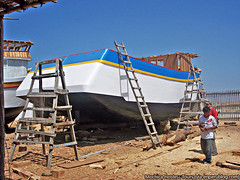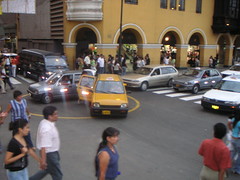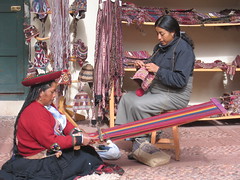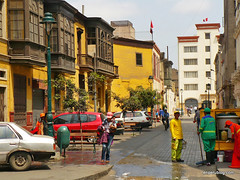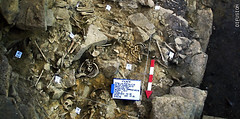Pachacútec, expander of the empire, ordered the site’s construction in the mid-1400’s. The complex took almost 100 years to complete with thousands of men. Many of the blocks were taken from as far as 32km away. Some blocks are the size of large buses and weigh hundreds of tons. No-one knows how they managed to move them, not even how they managed to cut the bricks with laser-precision. All that survives of the place is what the Spanish weren’t able to destroy – what they didn’t have the technology to destroy. What you see in my photos is a mere 20% of what once stood here.
Category: "Archaeology"
Qoricancha – Templo del Sol
The Temple of the Sun, mostly destroyed by a Dominican church built on top, is a prime example of the clash of cultures that took place; and who dominated who.
Qoricancha was a monumental building, several blocks away from the main square of the Inca city. It was where the highest priests in the empire were based…
Raqchi Ruins
We travelled closer and closer to the imperial city of Cuzco, along a similar route to which Inca founder and sun-child Manco Cápac would have walked. After rising from Lake Titicaca he headed west, looking for the ideal place to found his empire. His requirements were simple, the location had to have sufficient fertile surface soil – he would plunge his staff into the ground as he walked, always hitting rock in this barren landscape. Only when he reached the site of Cuzco was the soil abundant enough to settle.
Along this route is Raqchi, site of some pretty unique Inca ruins. These are the best, and to this extent only, surviving ruins that have adobe walls still sitting on a base of Inca rock walls. This was a normal feature in Inca architecture, all tall buildings were built like this, but thanks to the weather, and to the Spanish, little survives today.
Chullpas of Sillustani
At the shores of Lake Umayo, a small lake not 20km from Lake Titicaca, still stand the ancient funerary towers of Sillustani. Thought to be built by Aymara-speaking people called the Colla, they could show the origin of Inca architecture – a westward movement and evolution of Tiahuanaco technology. Whatever the case, the chullpas as they are known, stand out beautifully on the landscape of Puno’s bleak antiplano.
The Chavín culture
A full two-thousand years before the rise of the Inca empire another culture ruled most of the central Andes and spread their influence yet further. The Chavín, from their capital Chavín de Huántar in modern day Ancash, and with their roots in the very first civilisations and city-states in the Americas such as Caral, Sechín and Ventarrón, created what was Peru’s very first empire. In doing so, they instilled an idea in Andean peoples that lasted until the arrival of the Spanish – rule under one government in one society with one common culture is beneficial in this harshest of environments, that better and central organisation would bring better crop yeilds, as well as more free time for monument building, religion and science.



